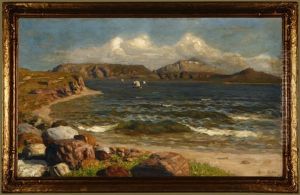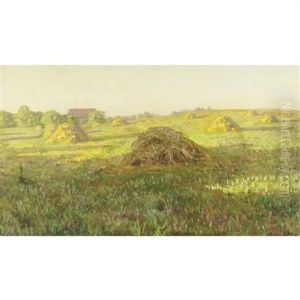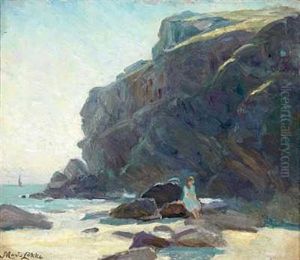Marie Lokke Paintings
Marie Lokke was a notable Norwegian painter born in 1847 and who passed away in 1921. Her contributions to the art world, particularly within the domain of landscape and portrait painting, have been recognized for their depth, sensitivity, and the skillful depiction of light and atmosphere. Lokke's work is emblematic of the broader movements within European art during her lifetime, including Realism and the early stages of Impressionism, though she developed a distinct style that was deeply personal and reflective of her unique perspective.
Lokke's artistic journey began in Norway, but her quest for artistic education and exposure led her across Europe, a common practice among artists of her time seeking to refine their craft and engage with different artistic communities. She studied under various prominent artists and was influenced by the changing art scenes in Paris, Munich, and Italy, places that were central to the art world in the 19th and early 20th centuries. Her style evolved over the years, showcasing her ability to capture the nuanced interplay of light, shadow, and color, which became hallmarks of her work.
Throughout her career, Marie Lokke was involved in several exhibitions, both in Norway and abroad, gaining recognition and acclaim for her work. Despite the challenges faced by women artists during her time, Lokke managed to carve out a space for herself within the art community. Her landscapes and portraits are celebrated for their emotional depth and technical precision, offering a window into the serene and contemplative aspects of nature and human experience.
After her death in 1921, Lokke's legacy continued to be honored in Norway and beyond, with her works being included in museum collections and exhibitions dedicated to showcasing the contributions of women to the arts. Her life and work stand as a testament to the enduring power of artistic expression and the significant role women have played in shaping the course of art history.


























